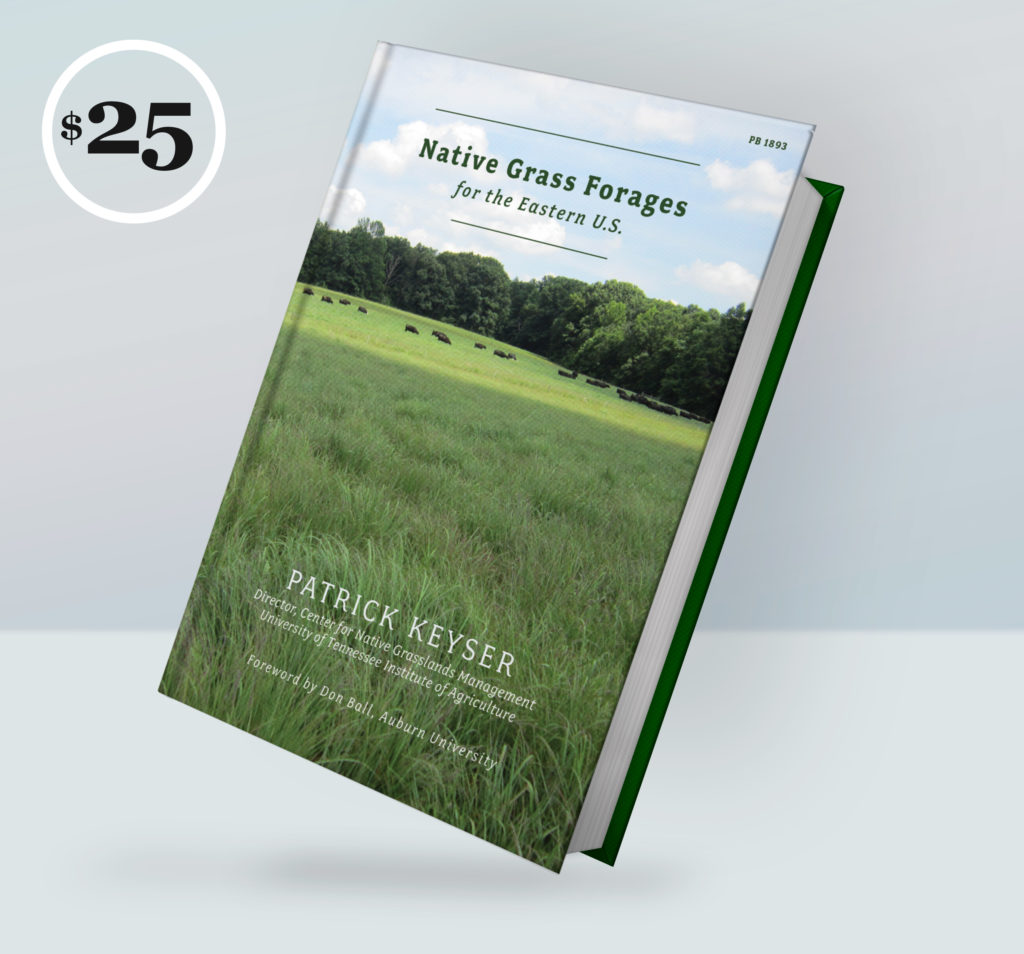
Photo courtesy Marc Puckett
With renewed national emphasis on the NRCS’s Working Lands for Wildlife program which includes the Beef-n-Bobs or Bobwhites in Grasslands or Cattle-n-Quail initiatives (take your pick of names – all have the same approach and the names are for marketing) a newly released book from Dr. Pat Keyser – Native Grass Forages for the Eastern U.S. – may be just the prescription for those enrolling in the program.
Dr. Pat Keyser is the leader of the Center for Native Grasslands Management at the University of Tennessee, Knoxville. When I first came to work for the Department of Wildlife Resources back in the mid-1990s, I was fortunate to get to work with Pat for a few years before he moved on to other things. Pat was an early adopter of using native grasses in cattle farming systems. And he recognized very quickly that, for native grasses to have a positive impact on wildlife, they had to be incorporated into working farms or ranches. You might say he was into working lands for wildlife long before the program caught up.
I wrote a BLOG a year or two ago about how, for years, wildlifers forgot that cattle grazing, when done correctly, is a positive thing for wildlife, even quail. Biologists were fond of saying, “cattle and quail don’t mix.” How did we forget Aldo Leopold’s most quoted five tools in wildlife management: Fire, Cow, Axe, Plow and Gun? Leopold stated that “the creative use of” these “tools” could improve, rather than destroy wildlife and their habitats. It is not whether you have cattle or not, it’s how you have them. And any rancher knows that sustainability includes taking care of water, soil, pasture, hay, woods, bees, birds and animals as well as cattle.
In Pat’s own words from his book’s preface – “In the years I have been working with native grasses, I have encountered plenty of opinion – some strong, one way or the other – and plenty of conjecture. I have also found that if one is willing to dig through scientific journals, there is a good deal of published research on these grasses. However, the majority of that research has been conducted in the Great Plains, a region with quite different climate and soils than what we have here in the eastern U.S. More recent research has been focused not on forage but on production of biomass for renewable energy. The remaining research is scattered among numerous journals and is not readily available to the practitioner, farmer, Extension agent or others interested in native grasses forages for the farms of the eastern U.S.
Therefore, I have taken on the task of synthesizing several decades of past research, a number of contemporary studies by numerous scientists and the work that has been conducted at the University of Tennessee over the past 15 years. The book format also provides the flexibility to draw on decades of experience – mine and that of many others – to provide some “mortar” to hold together the “bricks” of science I have synthesized.”
Pat further states: “The information in this book will enable individuals to make informed decisions about whether and how to use these grasses in each of their unique situations. The ultimate goal though is to contribute to more sustainable farms, those that are profitable, resilient, and improve the stewardship of our pastures, our soil, our water, and the ecosystems that sustain us.”
The benefits of native warm season grasses to soil health, water quality and cattle have been well documented. Perhaps less well known is that recent research has shown that many wildlife species, including bobwhite quail, and declining grassland birds do well in grazed native grasses. This makes perfect sense as historically, species occupying grasslands had to have been adapted to living in grasslands with large grazing animals like bison, elk, and deer routinely among them.
Though some wildlife references are made in this book, make no mistake about it, it is written for the serious native grass manager. It is broken into five basic segments: About Native Grasses (including some history), Native Grass Establishment, Managing Native Grasses, Other Management Issues, and Other Opportunities and Benefits. The book is comprehensive, but written in layman’s terms and easy and enjoyable to read.
This link will take you to a site where the book can be purchased, with more reviews and an introduction of its author, Dr. Pat Keyser.
https://nativegrasses.tennessee.edu/native-grass-forages/
With our human population increasing seemingly without end, and the subsequent demands for food, fiber and energy that come with us, lands to be set aside solely for wildlife conservation will become more and more difficult to obtain. It will only be through working lands that the full potential of these native grasses will be realized for wildlife.



